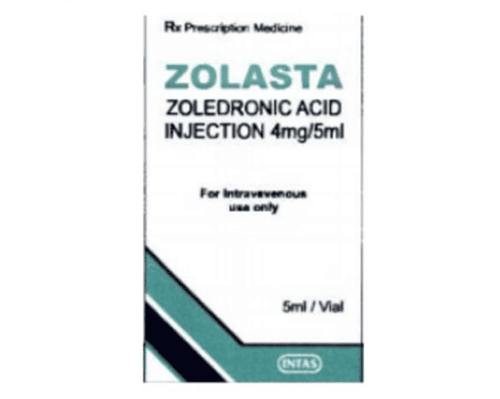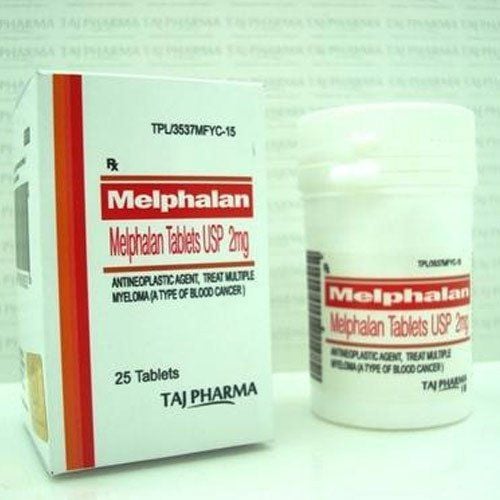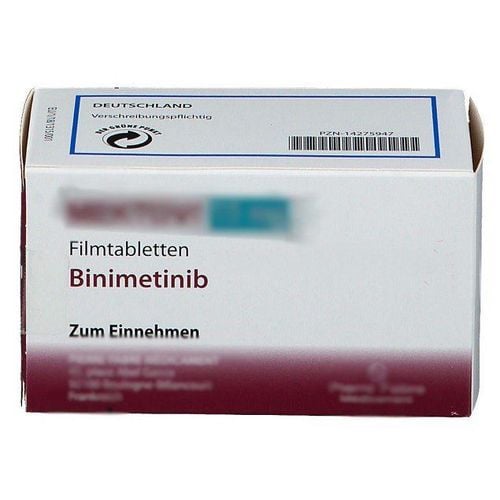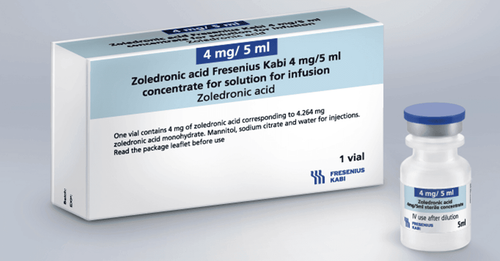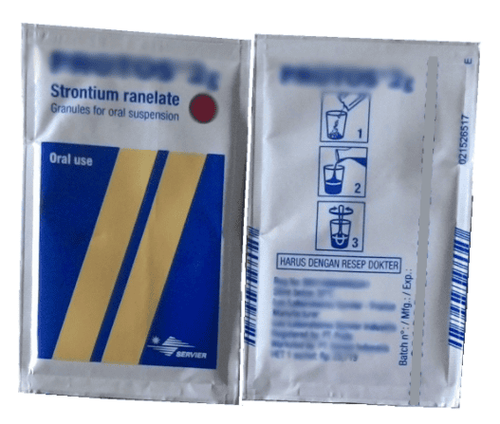This is an automatically translated article.
Lykalyzop belongs to the group of anti-cancer drugs and affects the immune system, indicated for the treatment of bone-related diseases in cancer patients. So how is Lykalyzop used?
1. What is Lykalyzop?
Lykalyzop medicine contains the main ingredient Zoledronic acid 4mg and other excipients just enough provided by the manufacturer. The drug is prepared in the form of lyophilized powder for injection, packing specification is 1 vial.
2. What are the effects of Lykalyzop?
Lykalyzop is indicated for the treatment of the following cases:
Prevention of bone-related phenomena (including pathological fractures, bone irradiation or surgery, spinal compression, cancer-induced hypercalcemia ) in patients undergoing cancer treatment, including patients with bone cancer. Support the treatment of blood calcium caused by cancer. On the other hand, Lykalyzop drug is contraindicated in the following cases:
Allergy to active ingredient Zoledronic acid or other excipients in the composition of the drug. Pregnancy and breastfeeding. Do not take this medicine with drugs containing the active ingredient bisphosphonate.
3. Dosage and how to use Lykalyzop
Lykalyzop drug is prepared in the form of lyophilized powder for injection, used by intravenous infusion.
The following are the recommended doses of Lykalyzop:
Prophylaxis of bone problems in patients with advanced cancer:
Adults and the elderly:
The recommended dose is 4mg reconstituted and further diluted solution for infusion (diluted with 100 ml of 0.9% w/v NaCl solution or 5% w/v Glucose solution), intravenous infusion at intervals of at least 15 minutes, 3 to 4 times a day. Patients need to be supplemented with 500mg of Calcium and 400UI of vitamin D per day. Treatment of hypercalcemia in patients with malignant neoplasms:
Adults and the elderly:
The recommended dose is 4mg of the prepared solution and continue to be diluted for infusion (diluted with 100ml of NaCl solution 0). .9% mass/volume or 5% glucose solution/volume), intravenous infusion with a time of at least 15 minutes each time. The patient must be adequately rehydrated before and during treatment. Note: This dosage is only the recommended dosage of the manufacturer. Depending on the medical condition of each patient, the doctor will prescribe the appropriate dose. Therefore, patients need to follow the doctor's instructions, do not change the dose or give the medicine to others when having similar symptoms.
4. Side effects of the drug Lykalyzop
The doctor always considers the benefit that Lykalyzop brings to the patient and the possible risk of side effects to prescribe the appropriate drug. Lykalyzop drug is generally well tolerated, some side effects may occur during use as follows:
Common:
Anemia, thrombocytopenia, leukopenia, headache, dizziness. Taste disorder. Conjunctivitis . Nausea, vomiting, loss of appetite. Bone pain, muscle pain, body pain. Uncommon:
Pancytopenia. Anxiety, sleep disorders. Heart rhythm disturbances. Hypomagnesemia, hypokalemia. In case a patient taking Lykalyzop has any unusual symptoms related to the drug, immediately notify the doctor or pharmacist for advice.
5. Lykalyzop drug interactions
Tell your doctor about all the medicines you are taking such as prescription drugs, over-the-counter medicines, dietary supplements, herbs... to avoid interactions that occur when combining drugs. during treatment. Some interaction reactions that may occur when using Lykalyzop drug are as follows:
To avoid incompatibilities, the diluted solution should be diluted with 0.9% w/v NaCl solution or 5% Glucose solution. mass/volume. The reconstituted solution must not be mixed with infusion solutions containing calcium or divalent cations, such as Ringer's lactate solution, and must be administered by a separate infusion line when the infusion line is used in combination with other drugs.
6. Notes when taking Lykalyzop
Some notes when taking Lykalyzop:
Patients must be evaluated before taking the drug to ensure adequate hydration. However, excessive fluid intake should be avoided in patients at risk of heart failure. Careful monitoring of metabolic parameters for hypercalcaemia, such as measurement of serum calcium, phosphate and magnesium concentrations, is recommended after initiation of therapy. If hypocalcaemia, hypophosphataemia, or hypomagnesemia occur, short-term additional treatment may be necessary. Usually, patients with untreated hypercalcaemia are at risk of impaired renal function, so renal function should be closely monitored. Aclasta should not be used at the same time, because it also contains a large amount of Zoledronic acid. The decision to treat patients with bone metastases should be considered in order to prevent bone-related events, as the therapeutic effect begins only 2 to 3 months after taking the drug. Before each dosing dose, serum creatinine should be assessed in the patient. In patients with mild to moderate renal impairment, a lower dose is required. In patients with evidence of deterioration, caution should be exercised during treatment, and should be reintroduced only when creatinine levels return to within 10% of normal. For patients with hepatic impairment, due to the lack of clinical data on drug safety, no specific recommendations for this population are available. Above is information about uses, dosage and precautions when using Lykalyzop. To ensure safety for your health and maximize the effectiveness of your treatment, you need to take Lykalyzop exactly as directed by your doctor.




